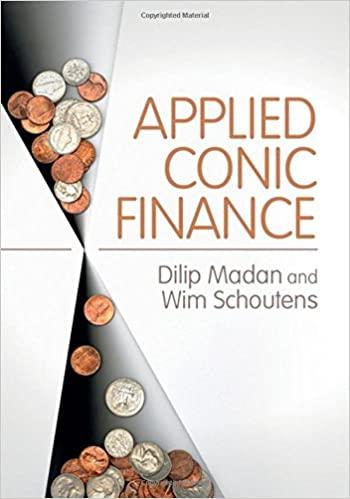Question
Question 1 Merafe Mining is evaluating the possibility of adding a new product line to its product mix. Because the exercise requires a detailed analysis
Question 1
Merafe Mining is evaluating the possibility of adding a new product line to its product mix. Because the exercise requires a detailed analysis of all possible risk scenarios or cases, EY was contracted to perform capital budgeting analysis for Merafe. The new machinery would cost Merafe an estimated amount of R200 000. A further R10 000 would be required for shipping charges and additional amount of R30 000 is estimated for installation of the new equipment.
Assume an economic life of 4 year for the machinery and the depreciation is based on MACRS 3-year class. Assume the following MACRS 3-year class depreciate rates: year 1: 33.33%, year 2: 44.45%, year 3: 14.81%, year 4: 7.41%.
The machinery is expected to have a salvage value of R25 000 after 4 years of use.
The new product line would generate incremental sales of 1 250 units per year for 4 years at an incremental cost of R100 per unit in the first year, excluding depreciation. Each unit can be sold for R200 in the first year. The sales price and cost are both expected to increase by 3% per year. Further, to handle the new line, the companys net working capital would have to increase by an amount equal to 12% of sales revenues. Assume companys tax rate of 40%, and its overall weighted average cost of capital, which is the risk-adjusted cost of capital for an average project (r), is 10%.
1.1. Define incremental cash flow. (1)
1.2. What is Merafes depreciable basis? What are the annual depreciation expenses? (5)
1.3. Calculate the annual sales revenues and costs (other than depreciation). Why is it important to include inflation when estimating cash flows? (5)
1.4. Construct annual incremental operating cash flow statements. (5)
1.5. Estimate the required net working capital for each year, and the cash flow due to investments in net working capital. (3)
1.6. Calculate the after-tax salvage cash flow. (3)
1.7. Calculate the net cash flows for each year. Based on these cash flows and the average project cost of capital, what are the projects NPV, IRR, PI, payback, and discounted payback? Do these indicators suggest that the project should be undertaken? (10)
1.8. Perform a sensitivity analysis on the unit sales, salvage value, and cost of capital for the project. Assume each of these variables can vary from its base-case, or expected, value by +-10%, +-20%, and +-30%. Discuss the results. (8)
1.9. Assume that EY is confident of its estimates of all the variables that affect the projects cash flows except unit sales and sales price. If product acceptance is poor, unit sales would be only 900 units a year and the unit price would only be R160; a strong consumer response would produce sales of 1 600 units and a unit price of R240. EY believes that there is a 25% chance of poor acceptance, a 25% chance of excellent acceptance, and a 50% chance of average acceptance (the base case).
Use the worst-, base-, and best-case NPVs and probabilities of occurrence to find the projects expected NPV, standard deviation, and coefficient of variation. (5)
1.10. Assume that Merafes average project has a coefficient of variation in the range of 0.2 to 0.4. Would the new line be classified as high risk, average risk, or low risk? What type of risk is being measured here? (3)
1.11. Merafe typically adds or subtracts 3 percentage points to the overall cost of capital to adjust for risk. Should the new line be accepted? (3)
Step by Step Solution
There are 3 Steps involved in it
Step: 1

Get Instant Access to Expert-Tailored Solutions
See step-by-step solutions with expert insights and AI powered tools for academic success
Step: 2

Step: 3

Ace Your Homework with AI
Get the answers you need in no time with our AI-driven, step-by-step assistance
Get Started


